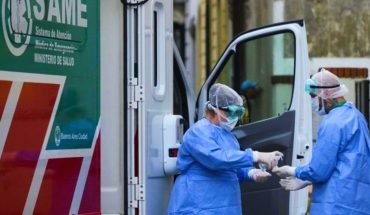at the start of the six-year period of Andrés Manuel López Obrador education scene is little heartening: deficiencies in the educational services ranging from poor infrastructure opening up to lack of furniture, water or internet, they have an impact on the level of learning and contributes to “reproduce or deepen the inequalities of origin” in the country.
Thus concludes it the study diagnosis of the right to education 2018, published by the National Council of evaluation of Social Development (Coneval) policy this Monday, December 3.
In addition, although education is a right established in the Constitution and the State granted the service free of charge, more than one million children do not attend school because they live below the extreme poverty by income (LPEI) , representing 13.2 per cent of school-age youth. The highest rate is among young people aged 15 to 17 with 35.2% and is followed by children aged three to five years, with a rate of 22.5%.
With respect to affordability, higher barriers in the upper level, were identified as in the school year 2016-2017, 12.8% of the students at this level, abandoned his studies.
Are among the main reasons for dropout in upper half reported in 2012: lack of money (36.4%); disliked study (7.8%); considered most important to work to study (7.2%); problems to understand the teachers (7.1%); is She got pregnant, got pregnant someone or had a son (4.7%); and married (3.4%).
The study concludes that while the third constitutional article states that everyone has the right to education, the evidence presented shows that access, permanence, trajectory and exploitation “are strongly linked to access barriers” due to its economic, indigenous status situation of disability, pregnancy or maternity, or place of residence.
In addition, the Mexican educational system “tends to reproduce, in the best cases (if not is that deepen) inequalities in origin, since no earmarks the best resources (infrastructure, teaching staff or materials) to schools in which the” “people with initial conditions at a disadvantage, so gaps in learning deepens widening inequalities in the outcomes of education”.
The Coneval deficiencies had to make requests for information to the SEP, the National Institute of physical educational infrastructure (INIFED) and use data from the Census of schools, teachers and students of basic education and special 2013 to determine the sufficiency of infrastructure needed to teach, with access to buildings constructed or adapted for educational purposes, with durable materials, 34 basic services (electricity, water, drainage, sanitary and drinking fountains) and basic furniture (furniture for) (sit and support to write and blackboards in classrooms).
Thus determined that with respect to the total number of basic education schools reported by the SEP for the school year 2017-2018, amounting to 226 thousand 188 campuses, 2.2% lack any source water supply and only 53% has the supply via the public network; 32.3% of campuses have connection to the drainage network; 66.4 per cent have health service, 66.1% have electricity and 19.5% have drinking fountains.
In addition, 27.2% of schools attended by about 95 thousand students, were not located in a building constructed or adapted for educational purposes, “which is essential to generate minimum conditions of learning”.
Therefore, the study warns that the infrastructure is insufficient, since about three of every four students not attending schools that meet all the necessary conditions to teach (15% has no constructions with durable materials, 70% do not have all the basic services and 20% does not have basic furniture).
Even among those drinking water does not receive water every day. Nationally, 72% have this resource daily, but 17% three or four days; and 11% one or two days. While nationally, 3.1 per cent of the public campuses there health in case outside little, earthquakes of September 19, 2017 and the seven affected even more schools. Until March 2018, according to data from the INIFED, 13 thousand 29 schools reported damage, 6 thousand 822, severe or moderate damages and 210 had serious damage.
The study warns that having a good infrastructure and complementary facilities such as libraries, cultural and sporting, dining venues and computer with internet access is crucial to achieve a more comprehensive learning, but the number of students with access to them is limited: only 2% of students in preschool, 11% of primary and 23% of high school have this.
translated from Spanish: More than one million children can’t go to school by poverty: Coneval
December 4, 2018 |





